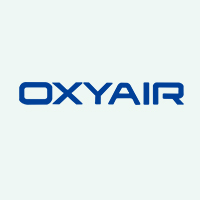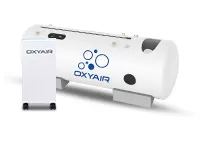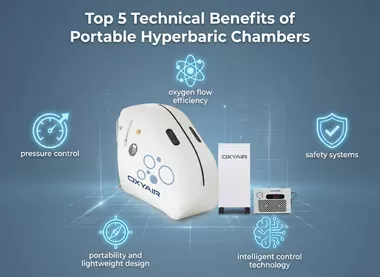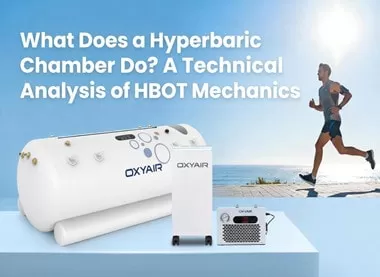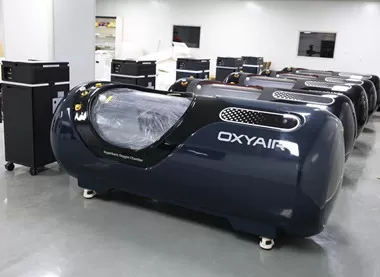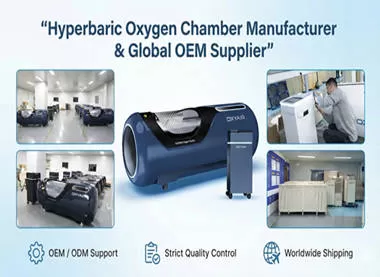The Future of Hyperbaric Oxygen Therapy for Avascular Necrosis Treatment
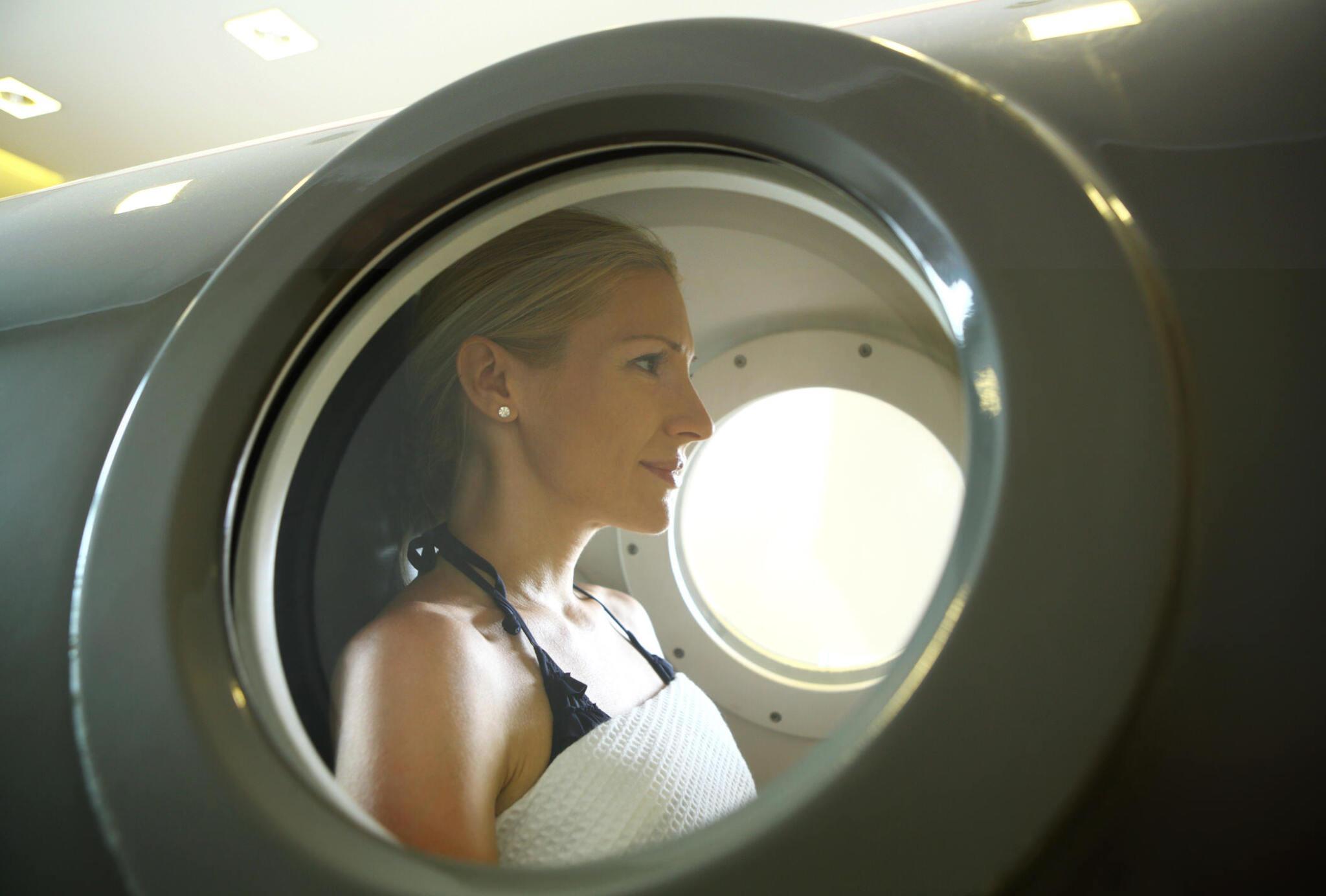
Understanding Avascular Necrosis
Avascular necrosis is a condition characterized by the death of bone tissue due to a lack of blood supply. It occurs when the blood flow to a specific area of bone is disrupted, leading to the deterioration and eventual death of the affected bone cells. This can result in pain, limited mobility, and even joint collapse.
Hyperbaric oxygen therapy (HBOT) shows promise as a potential treatment option for avascular necrosis. By delivering high levels of oxygen under increased atmospheric pressure, HBOT aims to improve blood flow and promote healing in the affected area. The increased oxygen concentration helps stimulate the growth of new blood vessels, providing essential nutrients and oxygen to the damaged bone tissue.
Oxygen therapy for bone tissue death has gained attention as an alternative approach to traditional treatments for avascular necrosis. While other treatment options focus on pain management or surgical interventions, HBOT targets the root cause by addressing the lack of blood supply to the bone.
HBOT for avascular necrosis offers a non-invasive and potentially effective solution that may help slow down or halt the progression of this debilitating condition. By enhancing tissue oxygenation and promoting angiogenesis (the formation of new blood vessels), hyperbaric oxygen therapy holds promise as a valuable treatment option for patients with avascular necrosis.
Uncovering the Underlying Causes
Understanding Avascular Necrosis
Avascular necrosis, also known as osteonecrosis, is a condition where bone tissue dies due to inadequate blood supply. The lack of blood flow deprives the bone cells of essential nutrients and oxygen, leading to their death. This can occur in various bones in the body, including the hips, knees, shoulders, and ankles.
Common causes of avascular necrosis include trauma, excessive alcohol consumption, and certain medical conditions. Trauma or injury to a joint can disrupt the blood supply to the affected bone, increasing the risk of avascular necrosis. Excessive alcohol consumption can also contribute to this condition by causing fatty deposits in blood vessels that supply bones.
Certain medical conditions can predispose individuals to avascular necrosis. These conditions include sickle cell disease, lupus, HIV infection, radiation therapy, and chemotherapy. Additionally, long-term use of corticosteroids or high-dose steroid medications can increase the likelihood of developing avascular necrosis.
Risk Factors and Symptoms
Several risk factors increase the likelihood of developing avascular necrosis. Steroid use, whether for medical purposes or as performance-enhancing drugs, is a significant risk factor. Joint trauma or injury from accidents or sports activities can also contribute to bone tissue death.
Symptoms of avascular necrosis may vary depending on the location and extent of bone tissue death. Common symptoms include joint pain that worsens with activity or weight-bearing, limited range of motion in the affected joint, and difficulty walking or bearing weight on the affected limb.
It is important to note that early-stage avascular necrosis may not present any symptoms initially. However, as the condition progresses and more bone tissue dies due to lack of blood supply, symptoms become more pronounced.
If you experience persistent joint pain or have any risk factors associated with avascular necrosis, it is crucial to consult with a healthcare professional for an accurate diagnosis and appropriate treatment options.
The Potential of Hyperbaric Oxygen Therapy
What is Hyperbaric Oxygen Therapy?
Hyperbaric oxygen therapy (HBOT) is a non-invasive medical treatment that involves breathing pure oxygen in a pressurized chamber. The increased atmospheric pressure allows the lungs to take in a higher concentration of oxygen, which then dissolves into the bloodstream and reaches all parts of the body.
During HBOT, patients are placed inside a specially designed chamber where the pressure can be increased up to three times the normal atmospheric pressure. This pressurized environment enables the body to absorb more oxygen, even in areas with limited blood flow.
Benefits of Hyperbaric Oxygen Therapy
Hyperbaric oxygen therapy has shown promising results in improving blood flow, reducing inflammation, and promoting tissue repair. By delivering increased levels of oxygen to the body's tissues, HBOT can stimulate healing processes and support the growth of new blood vessels.
In the context of avascular necrosis, hyperbaric oxygen therapy may help prevent further bone tissue death by enhancing blood flow to the affected area. The increased supply of oxygen promotes cellular metabolism and provides essential nutrients for bone regeneration.
Additionally, HBOT has been found to alleviate symptoms associated with avascular necrosis. Patients who undergo hyperbaric oxygen therapy often report reduced pain levels, improved mobility, and enhanced quality of life.
The benefits of hyperbaric oxygen therapy extend beyond avascular necrosis treatment. It has been successfully used in various medical conditions such as wound healing, radiation injuries, carbon monoxide poisoning, and certain infections.
It is important to note that while hyperbaric oxygen therapy shows promise as a potential treatment option for avascular necrosis, individual results may vary. Consultation with a healthcare professional experienced in HBOT is crucial to determine its suitability for each patient's specific condition.
Exploring the Mechanism of Action
How Does Hyperbaric Oxygen Therapy Work?
Hyperbaric oxygen therapy (HBOT) works by increasing the concentration of oxygen in the blood, which enhances tissue oxygenation. When a patient undergoes HBOT, they breathe in pure oxygen inside a pressurized chamber. The increased pressure allows the lungs to take in a higher amount of oxygen, which then dissolves into the bloodstream.
The elevated levels of oxygen in the blood have several beneficial effects on the body. Firstly, it promotes the formation of new blood vessels, a process known as angiogenesis. This is crucial for avascular necrosis patients as it helps improve blood flow to areas with compromised circulation.
Additionally, hyperbaric oxygen therapy stimulates the production of growth factors, substances that play a vital role in tissue repair and regeneration. These growth factors promote cell proliferation and enhance healing processes within bone tissue.
Effects on Bone Tissue
Hyperbaric oxygen therapy has shown promising effects on bone tissue. It may improve bone healing by increasing cellular metabolism and providing essential nutrients for bone regeneration. The increased supply of oxygen supports osteoblasts, cells responsible for bone formation, leading to enhanced bone cell activity.
Furthermore, HBOT has the potential to reduce bone loss associated with avascular necrosis. By improving blood flow and promoting tissue repair, it may help slow down or halt the progression of this condition. Early intervention with hyperbaric oxygen therapy can potentially preserve existing bone structure and prevent further damage.
It is important to note that while hyperbaric oxygen therapy offers potential benefits for avascular necrosis patients, individual responses may vary. The effectiveness of HBOT depends on various factors such as the severity of the condition and overall health status.
Consulting with a healthcare professional experienced in hyperbaric medicine is essential to determine if this treatment option is suitable for each patient's specific needs.
Real-life Transformations: Success Stories and Case Studies
Patient Success Stories
Hyperbaric oxygen therapy (HBOT) has brought about significant improvements in the symptoms of avascular necrosis for many patients. Numerous success stories highlight the potential of this treatment option in providing relief and enhancing quality of life.
Patient testimonials reveal real-life examples of individuals who have experienced positive outcomes after undergoing hyperbaric oxygen therapy. These stories often describe reduced pain levels, improved mobility, and a restoration of normal activities. Patients have reported being able to walk without assistance, engage in physical activities they previously couldn't, and regain their independence.
These success stories not only inspire hope but also provide valuable insights into the potential benefits of HBOT for avascular necrosis patients. While each person's experience may differ, these accounts demonstrate the transformative impact that hyperbaric oxygen therapy can have on their lives.
Case Studies
In addition to patient success stories, case studies have contributed to the growing body of clinical evidence supporting the effectiveness and safety of hyperbaric oxygen therapy for avascular necrosis. These studies involve detailed examinations of individual cases, documenting the treatment process, outcomes, and any associated factors.
Case studies provide valuable insights into various aspects of hyperbaric oxygen therapy for avascular necrosis. They shed light on treatment protocols, such as session frequency and duration, as well as patient selection criteria. Furthermore, case studies help healthcare professionals understand potential complications or side effects that may arise during HBOT.
By analyzing multiple cases collectively, researchers can identify patterns and trends that further enhance our understanding of how hyperbaric oxygen therapy can benefit avascular necrosis patients. The findings from these case studies contribute to ongoing advancements in treatment approaches and help refine best practices.
Together, patient success stories and case studies provide compelling evidence supporting the use of hyperbaric oxygen therapy as a viable treatment option for avascular necrosis. However, it is important to consult with a healthcare professional experienced in HBOT to determine its suitability for individual cases.
Complementary Treatments and the Importance of Early Intervention
Other Treatment Options
While hyperbaric oxygen therapy (HBOT) shows promise as a treatment option for avascular necrosis, there are other complementary treatments available as well. These additional treatment options can be used in conjunction with or as alternatives to HBOT, depending on the individual's specific condition and needs.
Medication is often prescribed to manage pain and reduce inflammation associated with avascular necrosis. Nonsteroidal anti-inflammatory drugs (NSAIDs), bisphosphonates, and other medications may be recommended by healthcare professionals to alleviate symptoms and slow down the progression of bone tissue death.
Physical therapy plays a crucial role in improving joint mobility, strengthening muscles around the affected area, and enhancing overall function. Physical therapists can design personalized exercise programs that focus on range-of-motion exercises, strength training, and weight-bearing activities to support bone health.
In some cases, surgical interventions may be necessary to address advanced stages of avascular necrosis or when conservative treatments have not provided sufficient relief. Surgical procedures aim to preserve joint function, alleviate pain, and restore blood flow to the affected bone. Joint replacement surgery or core decompression are examples of surgical options that may be considered.
Early Diagnosis and Intervention
Early diagnosis of avascular necrosis is vital for successful treatment outcomes. Timely identification allows for prompt medical intervention, which can help prevent further bone damage and improve the chances of recovery. If you experience persistent joint pain or suspect any risk factors associated with avascular necrosis, seeking medical attention at the earliest signs of symptoms is crucial.
Healthcare professionals will perform a thorough evaluation that may include imaging tests such as X-rays or magnetic resonance imaging (MRI). These diagnostic tools help assess the extent of bone tissue death and guide appropriate treatment decisions.
By diagnosing avascular necrosis early on, healthcare providers can implement a comprehensive treatment plan tailored to each patient's specific needs. This may involve a combination of therapies such as hyperbaric oxygen therapy, medication management, physical therapy, lifestyle modifications, and close monitoring.
The importance of early intervention cannot be overstated when it comes to avascular necrosis. Prompt diagnosis followed by timely treatment can significantly impact disease progression and improve long-term outcomes for patients.
Advancements in Hyperbaric Oxygen Therapy: Current Research
Ongoing Research Studies
Researchers are actively conducting studies to evaluate the effectiveness of hyperbaric oxygen therapy (HBOT) for avascular necrosis. These ongoing research studies aim to further understand the mechanisms of action behind HBOT and optimize treatment protocols.
By investigating the outcomes of HBOT in avascular necrosis patients, researchers can gather valuable data on its efficacy, safety, and long-term effects. These studies involve monitoring patient responses to hyperbaric oxygen therapy, assessing changes in symptoms, and evaluating improvements in bone health.
Additionally, ongoing research aims to identify specific patient populations that may benefit the most from HBOT. By understanding which individuals respond best to this treatment approach, healthcare professionals can tailor their recommendations and provide more personalized care.
Future Potential and Innovations
Advancements in hyperbaric oxygen therapy hold great potential for improving treatment outcomes for avascular necrosis. As current research continues to expand our knowledge, future innovations may revolutionize the field of avascular necrosis treatment.
One area of innovation lies in personalized treatment plans. By considering individual factors such as disease severity, underlying causes, and patient-specific needs, healthcare providers can develop customized HBOT protocols that maximize effectiveness and minimize potential risks.
Furthermore, targeted therapies may emerge as a promising avenue for avascular necrosis treatment. Researchers are exploring ways to enhance the delivery of oxygen specifically to affected areas using advanced techniques such as targeted drug delivery systems or stem cell therapies combined with HBOT. These innovative approaches have the potential to further improve tissue regeneration and promote better outcomes for patients.
As advancements continue to unfold in hyperbaric oxygen therapy and related fields, it is essential for healthcare professionals to stay updated on the latest research findings. This ensures that patients receive the most effective treatments based on evidence-based practices.
The Future: Hyperbaric Oxygen Therapy and Avascular Necrosis
Promising Outlook
The future of hyperbaric oxygen therapy (HBOT) as a treatment option for avascular necrosis holds great promise. Ongoing advancements and research in this field may lead to further improvements in its effectiveness and expand its application.
As more studies are conducted and data is gathered, the outlook for HBOT in avascular necrosis becomes increasingly positive. The growing body of evidence supporting the benefits of HBOT, combined with advancements in technology and treatment protocols, suggests that this therapy will continue to play a significant role in managing avascular necrosis.
With a deeper understanding of the mechanisms underlying HBOT, healthcare professionals can refine treatment approaches and optimize outcomes for patients. By tailoring HBOT protocols to individual needs, considering factors such as disease severity, location of bone tissue death, and patient-specific characteristics, the effectiveness of this therapy can be maximized.
Addressing Misconceptions
Despite the potential benefits of hyperbaric oxygen therapy for avascular necrosis, there are common misconceptions surrounding this treatment approach. It is important to address these misconceptions and provide accurate information to both patients and healthcare professionals.
One common misconception is that hyperbaric oxygen therapy is a cure-all solution for avascular necrosis. While it has shown promising results in improving symptoms and slowing down disease progression, it may not be suitable or effective for every individual. Each case should be evaluated on an individual basis to determine the most appropriate treatment plan.
Another misconception is that hyperbaric oxygen therapy is invasive or risky. In reality, HBOT is a non-invasive procedure that involves breathing pure oxygen in a pressurized chamber. When performed by trained professionals following established protocols, it has been proven safe with minimal side effects.
By addressing these misconceptions and providing accurate information about hyperbaric oxygen therapy for avascular necrosis, patients can make informed decisions about their treatment options. Healthcare professionals can also better guide their patients by dispelling myths and ensuring they have realistic expectations regarding the potential benefits of HBOT.
Embracing Hope: Hyperbaric Oxygen Therapy for Avascular Necrosis
Hyperbaric oxygen therapy (HBOT) offers hope as a potential treatment option for avascular necrosis. The positive outcomes observed in patients who have undergone HBOT, along with ongoing research and advancements in this therapy, provide optimism for improved outcomes in the future.
As we continue to delve into the mechanisms of action behind hyperbaric oxygen therapy, we gain a deeper understanding of how it can address the underlying causes of avascular necrosis. By increasing oxygen concentration in the blood and promoting tissue oxygenation, HBOT has the potential to stimulate the growth of new blood vessels and enhance bone healing.
The success stories and case studies shared by patients who have experienced significant improvements after undergoing HBOT are encouraging. These real-life transformations highlight the potential of this treatment option in alleviating symptoms and improving quality of life.
Furthermore, ongoing research studies aim to further optimize treatment protocols and explore innovative approaches to enhance the effectiveness of hyperbaric oxygen therapy. With each advancement, we move closer to unlocking its full potential in managing avascular necrosis.
By embracing hope and staying informed about the latest developments in hyperbaric oxygen therapy, patients, healthcare professionals, and individuals interested in avascular necrosis treatment can remain optimistic about the possibilities that lie ahead. With continued dedication to research and innovation, we can strive for improved outcomes and a brighter future for those affected by avascular necrosis.

